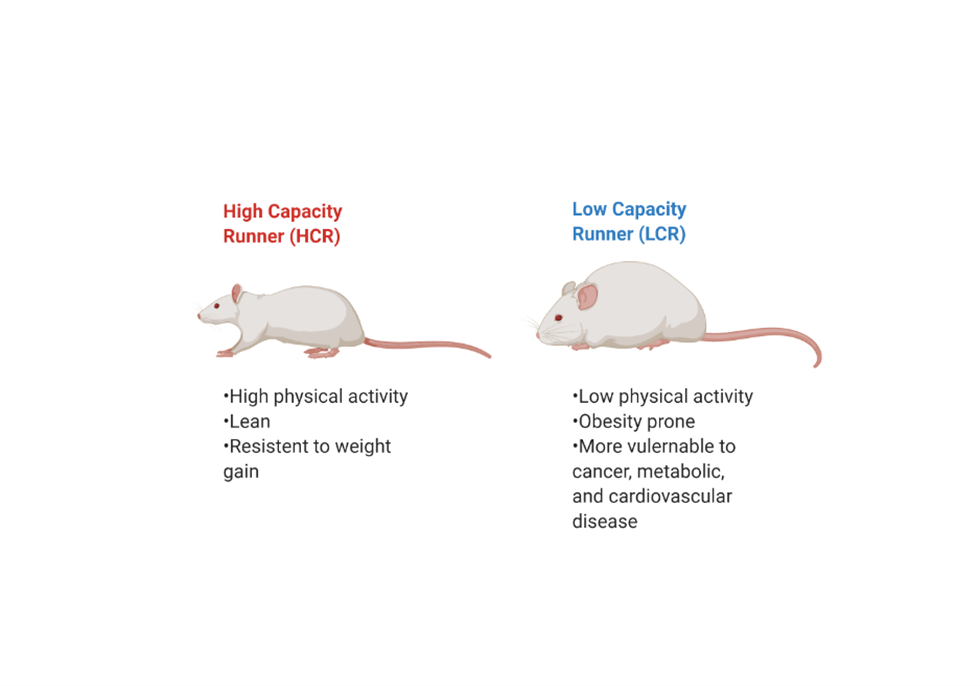Dr. Ashley Davis, Kent State University, Kent, Ohio, USA
With increasing obesity prevalence globally, people have an increased risk for developing diseases such as cardiovascular disease, diabetes, and cancer. Obesity is complex, but the most effective treatments aim at, not only reducing body weight, but also reducing fat mass.
Calorie restriction limits daily food intake, whereas intermittent fasting limits the hours that you consume food each day. A common challenge with dieting for weight loss is that it is often difficult to maintain the reduced weight. This occurs because, despite eating less, energy expenditure or calories burned, is still below what is necessary for the reduced body weight.
Previous studies have shown that aerobic fitness is a good predictor of an individual’s metabolic health. Aerobic fitness and metabolic health both play a role in how the body reacts to different food regimens, especially those aimed for weight loss. It is particularly challenging to promote weight loss for those with low aerobic fitness.
To model aerobic fitness, we used male rats with high aerobic fitness, termed high-capacity runners, and rats with low aerobic fitness, termed low-capacity runners. High-capacity runners are lean and are less prone to developing metabolic diseases, while low-capacity runners are prone to developing obesity and its comorbidities.
Our previous research investigated intermittent fasting and daily 50% calorie restriction in female rats modelling high- and low- aerobic fitness, surprisingly finding that rats with low aerobic fitness lost more weight than those with high aerobic fitness during intermittent fasting. Conversely, on daily 50% calorie restriction, rats with high aerobic fitness lost more weight.
New findings: Intermittent fasting induces greater weight loss in low-aerobic fitness rats compared to high-fitness rats
In our new study, published last month in the Physiological Society’s journal Experimental Physiology, we investigated daily 50% calorie restriction and intermittent fasting in male rats. Male rats were used to determine if the larger weight loss seen in the low-capacity runners was specific to male rats, or if it was generalizable to the low-capacity rats.
Our research was performed by reducing food intake by 50% daily or, for intermittent fasting, giving food every other day, with no food restriction on the feeding days. We then measured body weight daily. All rats also had their body composition—fat and lean mass—measured weekly.
Again, we found that the low-fitness rats lost much more weight and fat than the high-fitness rats when intermittent fasting. Therefore, we concluded that weight loss when intermittent fasting is characteristic of the low-fitness phenotype and not dependent on sex. These results highlight that intermittent fasting is an effective weight loss strategy for low-fitness rats. In other words, these results show how intermittent fasting interacts with aerobic fitness.

Intermittent fasting in humans vs. rats
If this research is replicated in humans, it would imply that people who have low aerobic fitness or are prone to obesity might find intermittent fasting more beneficial than standard calorie restriction.
When studying humans, however, there is a higher risk of poor accuracy in reporting calorie intake or sticking to limiting food intake within a certain time frame. Also, for humans, it is more realistic to time restrict feeding within five hours for example, than to completely fast every other day.
The reason this study, and many others in the field of obesity research, was done on rats is that it is easier to control and accurately monitor food intake and explore the role of aerobic fitness.
Future research
We plan on conducting further studies about the metabolic effects of intermittent fasting versus daily calorie restriction. Specifically, we will look at the differences of energy expenditure between low- and high-fitness rats on intermittent fasting and calorie restriction diets.
We will make direct comparisons side-by-side between the low- and high-aerobic fitness rats on both diet regimens to determine if the greater weight loss seen in the low-aerobic fitness rats is secondary to the timing or severity of food restriction or if intermittent fasting lessens the adaptation in energy expenditure seen with weight loss.
We also plan to analyse differences in brain appetite signalling and fat tissue metabolic markers to explore possible underlying mechanisms by which the low aerobic rats lose more weight with intermittent fasting. Altogether, this research highlights the ability of intermittent fasting to promote weight loss in the low aerobic fitness rats.
In humans, research from Patterson et al. (2015) highlights that in overweight or obese individuals, intermittent fasting resulted in weight loss, as well as improvements in inflammatory markers and improvements of high-density lipoprotein cholesterol. Although our research was performed in rats, humans with low aerobic fitness or those who do not regularly exercise may also benefit from intermittent fasting.
References
Davis AE, Smyers ME, Beltz L, Mehta DM, Britton SL, Koch LG, Novak CM. Differential weight loss with intermittent fasting or daily calorie restriction in low- and high-fitness phenotypes. Experimental Physiology. 2021 Jun 4. https://doi.org/10.1113/EP089434. Epub ahead of print. PMID: 34086376.
Patterson, R. E., Laughlin, G. A., Sears, D. D., LaCroix, A. Z., Marinac, C., Gallo, L. C., Hartman, S. J., Natarajan, L., Senger, C. M., Martínez, M. E., & Villaseñor, A. (2015). Intermittent fasting and human metabolic health. Journal of the Academy of Nutrition and Dietetics, 115, 1203–1212. https://doi.org/10.1016/j.jand.2015.02.018
